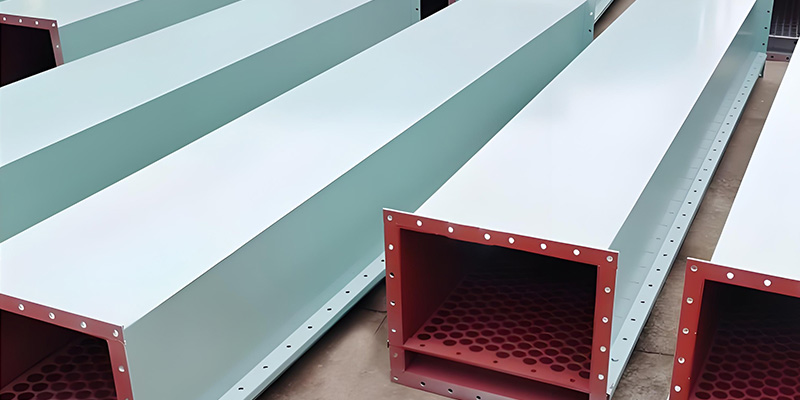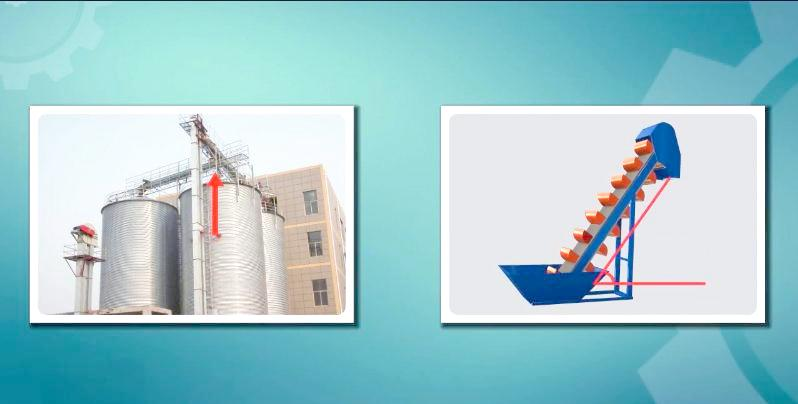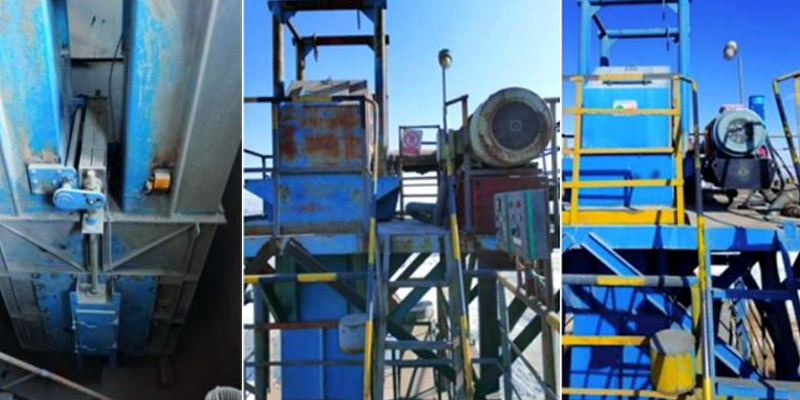In the field of industrial bulk material handling, when efficiently and cost-effectively transporting fine, powdered materials is required, the air slide conveyor undoubtedly presents an ingenious solution. It eliminates the mechanical drive components found in traditional belt or screw conveyors; instead, it cleverly utilizes aerodynamic principles, allowing material to flow smoothly like a fluid on an invisible “air cushion.” This article will thoroughly analyze its working principle and core advantages, and will primarily focus on conquering the most troublesome practical application issue: blockage.
Core Working Principle of the Air Slide Conveyor
The fundamental working principle of the air slide conveyor is the physical phenomenon of “fluidization.”
1. Ingenious Structural Design
Its trough is divided by a permeable layer into two separate chambers:
-
Upper Chamber (Conveying Trough): This serves as the flow channel for the material.
-
Lower Chamber (Air Chamber): This chamber receives filtered, low-pressure, high-volume air.
2. The Remarkable “Fluidization” Process
When compressed air from the lower chamber penetrates upwards through the micro-pores of the permeable layer, it acts uniformly on the material particles. Consequently, this air flow counteracts the friction and gravity between particles, causing them to separate and suspend, thus exhibiting liquid-like flow characteristics—this is “fluidization.”
3. The Driving Force
Once the material becomes fluidized, it only requires a slight incline (typically 4°-10°) to flow automatically from the high end to the low end under its own gravity, much like water, thereby completing the conveying process.

Core Advantages of the Air Slide Conveyor
Due to its unique working principle, the air slide conveyor offers numerous advantages over traditional equipment:
-
Extremely Low Energy Consumption: It only requires a fan to provide low-pressure air, resulting in significantly lower power consumption than mechanical conveyors.
-
Nearly Zero Maintenance: It contains no moving parts, experiences minimal wear, boasts a long service life, and requires low maintenance costs.
-
Quiet and Clean Operation: It generates no mechanical noise, and its fully enclosed system effectively prevents dust escape, ensuring good environmental performance.
-
High Conveying Efficiency: Fluidized material has very low internal friction, enabling high conveying capacity and smooth flow.
-
Layout Flexibility: It requires no complex foundation and can be flexibly routed according to the plant layout.
Primary Limitations
Similarly, its working principle defines its limitations:
-
Downhill Conveying Only: It relies on gravity and cannot convey horizontally or uphill.
-
Material Sensitivity: Material moisture content and particle size must be within a suitable range; otherwise, fluidization can be adversely affected.
-
Distance Limitation: The single-unit conveying distance is generally limited (usually not exceeding 100 meters).
Comprehensive Analysis and Solutions for Air Slide Conveyor Blockage
Despite its prominent advantages, blockage is the most common operational issue in practice. Fundamentally, blockage stems from insufficient fluidization or hindered material flow. The specific causes and corresponding solutions are as follows:
In-Depth Analysis of Blockage Causes:
-
Excessively Moist Material: High moisture content causes material to clump, clogging the pores of the permeable layer and disrupting fluidization.
-
Impurity Jamming: Foreign objects like metal fragments or debris accumulating on the permeable layer create physical barriers, obstructing material flow and air distribution.
-
Damaged Permeable Layer: Tears or improper seams can cause localized air jets, forming “air columns” that disrupt flow and lead to material accumulation.
-
System Air Leakage: Poor trough sealing leads to loss of air pressure and volume, preventing adequate fluidization power from reaching the material along the entire length.
-
Insufficient Incline or Air Volume: An installation slope that is too small, or a sudden drop in air pressure/volume, results in insufficient driving force for material flow.
-
Improper Operation: If material remains in the trough during shutdown, condensation due to temperature drop can cause hardening, making the material difficult to flow upon restart.
-
Excessive Residual Pressure: Poor exhaust ventilation in the upper casing creates positive internal pressure, which pushes down on the material, suppressing its suspension and fluidization.
Prevention and Solution Strategies to Eliminate Blockage
-
Strictly Control Material Source: Rigorously control the moisture content of raw meal from mills and return dust to prevent adhesion at the source.
-
Enhance Upstream Debris Removal: Install effective magnetic separators and debris removal devices before material enters the air slide.
-
Promptly Repair the Permeable Layer: Conduct regular inspections. If material “bulging” is observed, immediately shut down and replace the damaged permeable layer. During installation, ensure it is laid flat and securely sealed with specialized adhesive.
-
Comprehensively Seal Leakage Points: Use rubber sheets, asbestos rope, etc., to enhance sealing. Install air lock devices at the feed inlet and utilize pressure gauge pipes to monitor for system pressure abnormalities.
-
Optimize Design and Parameters: Select the appropriate slope based on material characteristics (particle size, moisture) and conveying distance. If possible, moderately increase the slope or boost the fan’s air pressure and volume.
-
Standardize Start-up and Shutdown Procedures: Before shutdown, always stop the feed first and allow material in the trough to empty before stopping the fan. During start-up, first start the fan, and only begin feeding material after the air flow stabilizes.
-
Ensure Exhaust Ventilation: Provide adequate exhaust ports at the tail end and intermediate sections of the trough. Install filter bags to prevent dust emission, ensuring the upper casing maintains a slight negative pressure.
-
Install Smart Alarms: Install level or pressure sensor alarms at the feed end. These can automatically cut off the feed or trigger a shutdown upon detecting precursors to blockage, preventing the issue from escalating.
Conclusion
The air slide conveyor is a cleverly designed, economical, and efficient conveying equipment. By thoroughly understanding its core “fluidization” principle, and strictly adhering to protocols during installation, operation, and maintenance—particularly by proactively preventing and addressing blockage issues—you can maximize its energy-saving and reliable advantages. Ultimately, this ensures robust support for the efficient and stable operation of your production line.




